Weather. Again.
This week, I’m on a Southwest Circle Helicopter Adventure with two very nice folks from California. Although this helicopter excursion normally runs 6 days and 5 nights, these folks expanded the trip to add 2 more days at Lake Powell.
The weather was an issue from Day 1, when we departed Phoenix Deer Valley Airport and headed north to Sedona. Although the forecast didn’t seem out of the ordinary — mild temperatures, light winds, clear skies — an odd white haze had settled over the Phoenix area, making visibility poor. It was like flying in Los Angeles. Ick.
 So instead of giving my guests their Phoenix Tour and heading up the Verde River on Day 1, we took a shorter route to Sedona that overflew Lake Pleasant and stayed within several miles of the I-17 corridor. I figured I’d save the scenic flight for when visibility was better. I also expected visibility to be better in the Sedona area and was very surprised that it was not.
So instead of giving my guests their Phoenix Tour and heading up the Verde River on Day 1, we took a shorter route to Sedona that overflew Lake Pleasant and stayed within several miles of the I-17 corridor. I figured I’d save the scenic flight for when visibility was better. I also expected visibility to be better in the Sedona area and was very surprised that it was not.
Of course, I watch the weather closely on these trips. Heck, I seldom go for more than a few hours without checking the forecast for the next three days and destinations. That’s how I knew the wind would kick up at the Grand Canyon for Day 2 and likely keep blowing through Day 3.
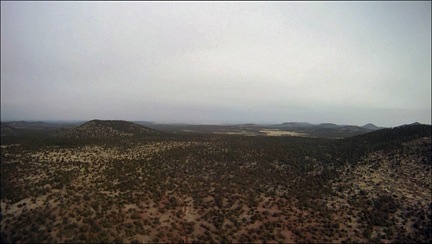 The flight to the Grand Canyon on Day 2 wasn’t anything special — except for that white haze that persisted, even up on the Coconino Plateau. Very odd for Arizona. It wasn’t blowing dust, either — the wind wasn’t strong enough for that. Just an ugly haze.
The flight to the Grand Canyon on Day 2 wasn’t anything special — except for that white haze that persisted, even up on the Coconino Plateau. Very odd for Arizona. It wasn’t blowing dust, either — the wind wasn’t strong enough for that. Just an ugly haze.
We got to the Grand Canyon in time for my guests’ helicopter tour with Maverick Helicopters. We then piled into my redneck truck, which lives at the Grand Canyon during the winter months, and went into the park. I set my guests free to enjoy their day at the South Rim and did my job: getting their luggage into their rooms. Then I relaxed in my own room. I’d been at the Grand Canyon so many times when the weather was so much better. I was tired and thought I’d take it easy for the rest of the day.
Of course, I still watched the weather. I wasn’t happy about what I saw for Day 3. Winds 25 gusting as high as 41 would make for a rough flight out of the area. And then there was the 90% chance of precipitation with 100% sky cover. The forecasters said to expect snow flurries with accumulations under 1 inch. This was a far call from the blizzard I’d experienced at Bryce Canyon the month before, so the snow didn’t worry me much. It was the cloud cover. I knew how low clouds could get at Grand Canyon Airport. If they came too low for a safe, VFR departure, we’d be stuck.
One of the drawbacks to scheduling a Southwest Circle excursion is that everything needs to be booked and paid for in advance. Last minute cancellations are not only costly, but they cause nightmares in merely making changes. For example, if we missed a Monument Valley date, we would likely not be able to stay there the next night — the place is booked months in advance. My guests were scheduled to take an Antelope Canyon Tour on Day 3 and a Lake Powell boat ride to Rainbow Bridge on Day 4. Although Antelope Canyon could likely be rescheduled, the boat trip could not. So weather delays cause nightmares for me during a trip. It’s for that reason that I usually can’t relax until we reach Monument Valley, normally on Day 4.
 Day 3 dawned gray but with plenty of visibility. I even got out and snapped a few photos when the sun poked through some clouds and illuminated one of the rock formations in the canyon near Bright Angel Lodge, where we were staying. I grabbed some coffee, went back to my room, and checked e-mail. An hour later, I peeked out the window and saw that it was snowing.
Day 3 dawned gray but with plenty of visibility. I even got out and snapped a few photos when the sun poked through some clouds and illuminated one of the rock formations in the canyon near Bright Angel Lodge, where we were staying. I grabbed some coffee, went back to my room, and checked e-mail. An hour later, I peeked out the window and saw that it was snowing.
It was 7 AM. We were scheduled to leave at 9 AM.
Over the next hour, visibility dropped to near zero and the snow came down hard and fast.
After dealing with an almost flat tire on my redneck truck, I called my guests and told them we’d be delaying departure. I got their room checkout time extended to noon.
By 9 AM, it was pretty obvious that we weren’t going anywhere anytime soon. I shot this video outside the Bright Angel Lodge, right on the rim of the canyon. (I added the voiceover later that night.) Trouble was, I couldn’t extend our stay at the Canyon and I had all those other activities scheduled.
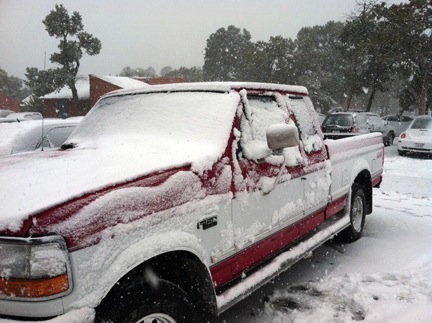 I felt bad for my guests. They’d spent a lot of money on this trip and now they were stuck at a scenic place with no scenery and no helicopter flight to get them to their next destination. So I became their driver for the day. After realizing that the truck was not likely to make it to Desert View (on the east end of the park) before the roads were cleared, we stopped at the Visitor Center and the Geology Museum before heading into Tusayan (the tourist town outside the park) for lunch. The plan was for them to see the IMAX movie across the street next.
I felt bad for my guests. They’d spent a lot of money on this trip and now they were stuck at a scenic place with no scenery and no helicopter flight to get them to their next destination. So I became their driver for the day. After realizing that the truck was not likely to make it to Desert View (on the east end of the park) before the roads were cleared, we stopped at the Visitor Center and the Geology Museum before heading into Tusayan (the tourist town outside the park) for lunch. The plan was for them to see the IMAX movie across the street next.
By 1 PM, the weather seemed to be clearing out. As we ate lunch at a “steakhouse,” I came up with a plan. While they were watching the movie, I’d prep the helicopter for departure. If the visibility held, we could escape to the east and arrive in Page before dark. (I’d already rescheduled their Antelope Canyon tour for Day 5.)
 But that plan failed miserably. When I got to the airport, I found the helicopter’s right side — the side facing the weather — completely iced over. The main rotor hub, the tail cone, and the tail rotor were all coated with ice. Even the skids looked frozen to the ground. And, of course, there was a good helping of snow in the fan scroll (again!) and even some inside the air intake port. The temperature had dropped by 10°F and it was now below freezing. It would not warm up again that day. The helicopter was officially grounded.
But that plan failed miserably. When I got to the airport, I found the helicopter’s right side — the side facing the weather — completely iced over. The main rotor hub, the tail cone, and the tail rotor were all coated with ice. Even the skids looked frozen to the ground. And, of course, there was a good helping of snow in the fan scroll (again!) and even some inside the air intake port. The temperature had dropped by 10°F and it was now below freezing. It would not warm up again that day. The helicopter was officially grounded.
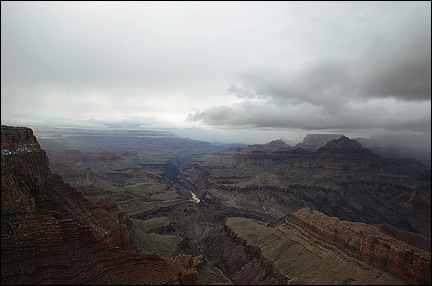 I wound up driving them to Page. The trip should have taken just over 2 hours, but since the weather was clearing enough to see into the canyon, we made several stops along the way. We arrived in Page at 8 PM. I checked them into their room, made sure they were set for the next day’s boat ride, and checked into my room at the Day’s Inn.
I wound up driving them to Page. The trip should have taken just over 2 hours, but since the weather was clearing enough to see into the canyon, we made several stops along the way. We arrived in Page at 8 PM. I checked them into their room, made sure they were set for the next day’s boat ride, and checked into my room at the Day’s Inn.
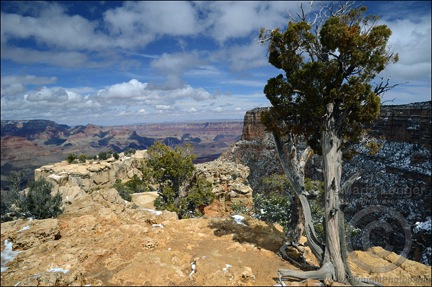 Now what I needed was a thaw — temperatures above 32°F. I must have called the AWOS number for GCN a dozen times before 10:30 AM on Day 4. Then I climbed into my redneck truck and made the trek down to Grand Canyon Airport. It took 2 and a half hours with just one stop to snap pictures of a very different (from the previous day) view.
Now what I needed was a thaw — temperatures above 32°F. I must have called the AWOS number for GCN a dozen times before 10:30 AM on Day 4. Then I climbed into my redneck truck and made the trek down to Grand Canyon Airport. It took 2 and a half hours with just one stop to snap pictures of a very different (from the previous day) view.
The temperature was about 36°F when I arrived at the airport. The sun — my friend! — was playing hide and seek with thick, layered clouds. But the tour operators were all flying — visibility was great! Even the wind was not a factor. Most of the ice on the outside of the helicopter had melted. I just had to resort to my hot water trick to melt all the snow out of the fan scroll. After a good preflight, I started it up. A little rough at first and it took a full 10 minutes to warm up. But then I was ready to go and, after getting clearance from Grand Canyon tower, took off and headed east.
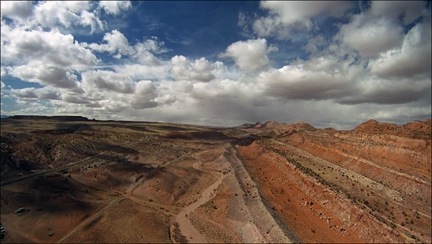 The flight was, for the most part, smooth. I ran the video camera (as you might expect) and captured some good footage over the Little Colorado River Gorge and along the Echo Cliffs. I set down on a helipad at Page Municipal Airport at 3 PM.
The flight was, for the most part, smooth. I ran the video camera (as you might expect) and captured some good footage over the Little Colorado River Gorge and along the Echo Cliffs. I set down on a helipad at Page Municipal Airport at 3 PM.
Today, the weather is clear with not a cloud in the sky. My guests are just finishing up their Antelope Canyon Tour. Tomorrow, we’ll continue on our way, winding up at Monument Valley in the early afternoon. So far, the forecast looks great.
Let’s hope it stays that way.


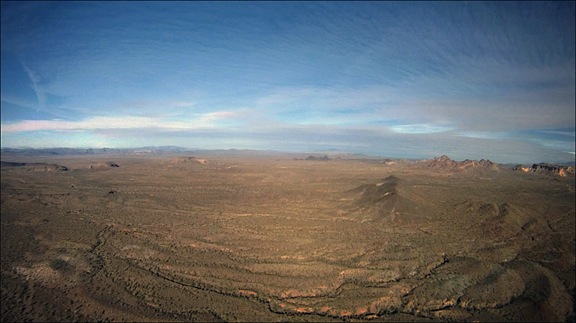
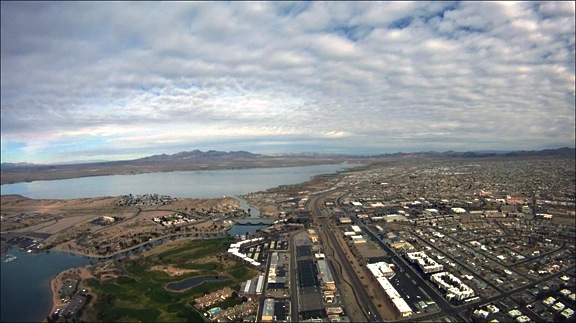
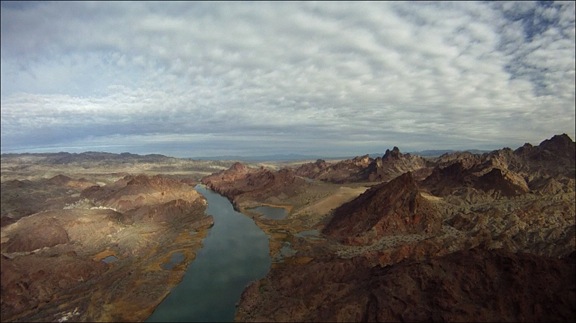
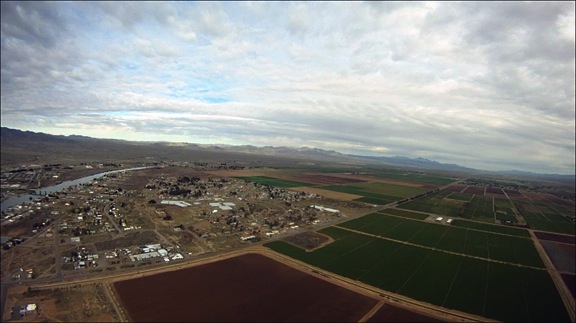
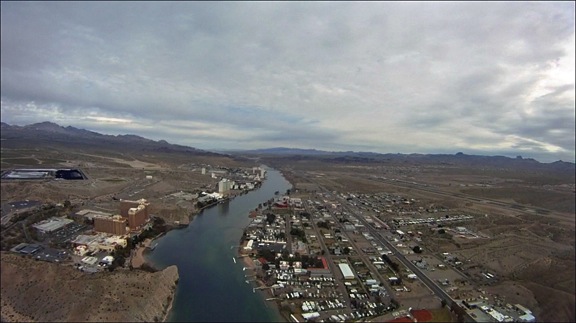
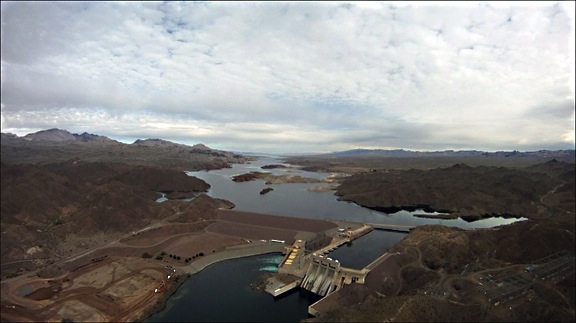
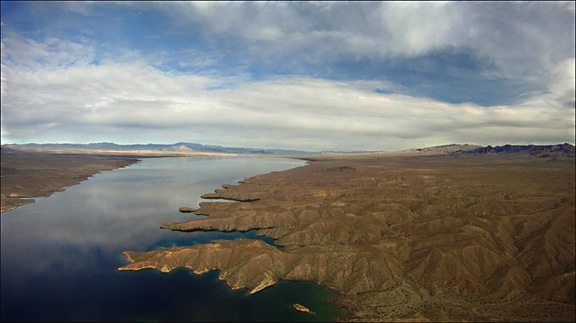
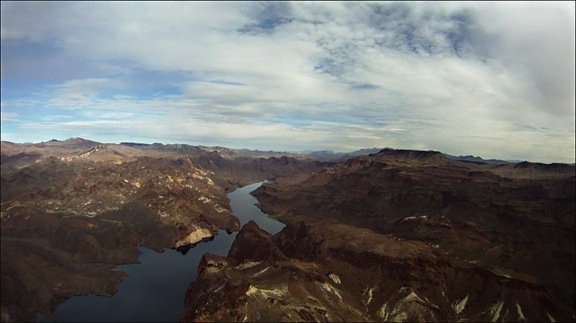


 I admit I wasn’t looking forward to the gig. The two photographers claimed to weigh 242 pounds (converted from kilos) and I knew they likely weighed more fully dressed and carrying camera equipment. I calculated the weight and balance as soon as I had this information and discovered that I’d have to strip all non-essential equipment out of the helicopter to lighten it up so we could take enough fuel for 2 hour flight segments (plus FAA-required reserves). Anything that was left on board would have to be shifted from under my seat to under the seat behind me, just to shift weight backwards. Having two fatties — yes, including me — up front would make us front-heavy. Having two fatties on the left side would make us heavy on that side. But even after adding 15 pounds of weight for each of them, I confirmed that’d be in balance with 2/3 fuel or less on board.
I admit I wasn’t looking forward to the gig. The two photographers claimed to weigh 242 pounds (converted from kilos) and I knew they likely weighed more fully dressed and carrying camera equipment. I calculated the weight and balance as soon as I had this information and discovered that I’d have to strip all non-essential equipment out of the helicopter to lighten it up so we could take enough fuel for 2 hour flight segments (plus FAA-required reserves). Anything that was left on board would have to be shifted from under my seat to under the seat behind me, just to shift weight backwards. Having two fatties — yes, including me — up front would make us front-heavy. Having two fatties on the left side would make us heavy on that side. But even after adding 15 pounds of weight for each of them, I confirmed that’d be in balance with 2/3 fuel or less on board. Using
Using  What fascinated me was the way the light changed throughout the flight. At first, it was partly cloudy. Then the sun slipped behind the clouds and it was cloudy. Then the sun began to break through, speckling the mountainsides with light. This still image, captured from the video, gives you an idea of what I mean. The light changed numerous times over the two-hour period of the flight — at one point, clouding over completely only 1,000 feet above me — giving the illusion that the flight was conducted over multiple days.
What fascinated me was the way the light changed throughout the flight. At first, it was partly cloudy. Then the sun slipped behind the clouds and it was cloudy. Then the sun began to break through, speckling the mountainsides with light. This still image, captured from the video, gives you an idea of what I mean. The light changed numerous times over the two-hour period of the flight — at one point, clouding over completely only 1,000 feet above me — giving the illusion that the flight was conducted over multiple days. One of the highlights of the flight was crossing the red rock cliffs west of
One of the highlights of the flight was crossing the red rock cliffs west of  When I got to the empty expanse of the Navajo Reservation, I dropped down and flew low over the ground. There were few homes in the hundreds of square miles and only a handful showed signs of life. In the video, my helicopter’s shadow is clearly visible: small when I’m flying higher and larger when I’m flying lower. The video makes it seem as if I’m going much faster during this portion of the flight, but I’m not. I managed to keep a steady 100-110 ground speed for most of the flight. It’s just an illusion: the closer the camera is to the ground, the faster I seem to be flying.
When I got to the empty expanse of the Navajo Reservation, I dropped down and flew low over the ground. There were few homes in the hundreds of square miles and only a handful showed signs of life. In the video, my helicopter’s shadow is clearly visible: small when I’m flying higher and larger when I’m flying lower. The video makes it seem as if I’m going much faster during this portion of the flight, but I’m not. I managed to keep a steady 100-110 ground speed for most of the flight. It’s just an illusion: the closer the camera is to the ground, the faster I seem to be flying. I’m working on an itinerary for a Flying M Air excursion client. They’ve decided to customize their Southwest Circle Helicopter Adventure to add another day at Page, AZ, as well as an overnight stay at Bullfrog Basin about halfway up Lake Powell.
I’m working on an itinerary for a Flying M Air excursion client. They’ve decided to customize their Southwest Circle Helicopter Adventure to add another day at Page, AZ, as well as an overnight stay at Bullfrog Basin about halfway up Lake Powell.
 Over time, the water has carved a series of narrow slot canyons through the red rock sandstone. Two of these slots are open to the public. Upper Antelope Canyon is south of route 98 (see top satellite photo); Lower Antelope Canyon is north of route 98 (see bottom satellite photo). Examination of satellite images of the area show additional slot canyons along Antelope Creek, but they are not open to the public.
Over time, the water has carved a series of narrow slot canyons through the red rock sandstone. Two of these slots are open to the public. Upper Antelope Canyon is south of route 98 (see top satellite photo); Lower Antelope Canyon is north of route 98 (see bottom satellite photo). Examination of satellite images of the area show additional slot canyons along Antelope Creek, but they are not open to the public. Upper Antelope Canyon is, by far, the more visited of the two. I think there are two reasons for this:
Upper Antelope Canyon is, by far, the more visited of the two. I think there are two reasons for this: Lower Antelope Canyon has far fewer visitors than Upper. Unlike Upper, no tour companies — at least none to my knowledge — visit it. In addition, the canyon itself requires a decent amount of physical fitness. There are ladders, narrow passages, and various places where scrambling on the smooth sandstone is necessary. Heck, even the opening of the canyon, where you descend into a crack in the rock (shown here) seems designed to keep certain folks out: a fatty simply wouldn’t fit through it.
Lower Antelope Canyon has far fewer visitors than Upper. Unlike Upper, no tour companies — at least none to my knowledge — visit it. In addition, the canyon itself requires a decent amount of physical fitness. There are ladders, narrow passages, and various places where scrambling on the smooth sandstone is necessary. Heck, even the opening of the canyon, where you descend into a crack in the rock (shown here) seems designed to keep certain folks out: a fatty simply wouldn’t fit through it. The great thing about Lower Antelope Canyon, however, is that you have up to four hours to explore it pretty much on your own. This gives you plenty of time to shoot photos or lose yourself in thought between the smooth sandstone walls. Because there are far fewer visitors, it’s a more relaxed and pleasant place to visit. You can probably guess that I prefer it.
The great thing about Lower Antelope Canyon, however, is that you have up to four hours to explore it pretty much on your own. This gives you plenty of time to shoot photos or lose yourself in thought between the smooth sandstone walls. Because there are far fewer visitors, it’s a more relaxed and pleasant place to visit. You can probably guess that I prefer it.